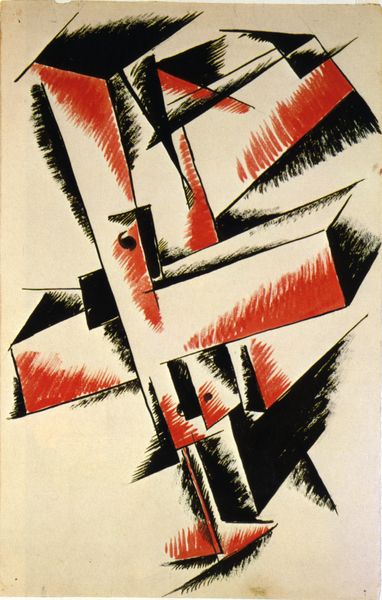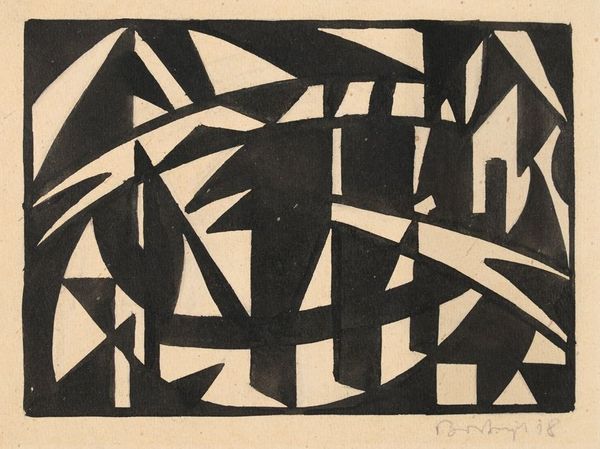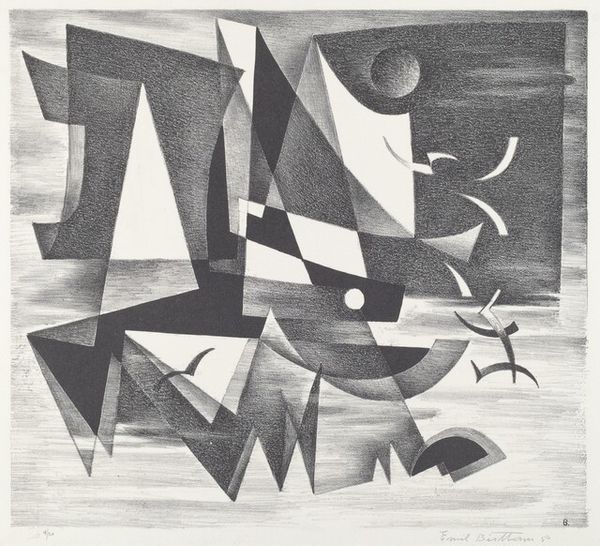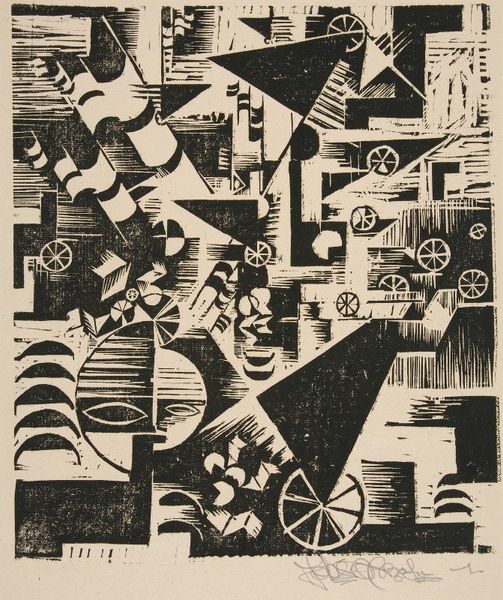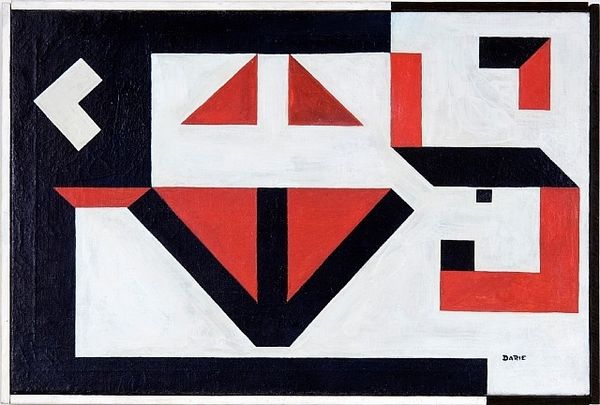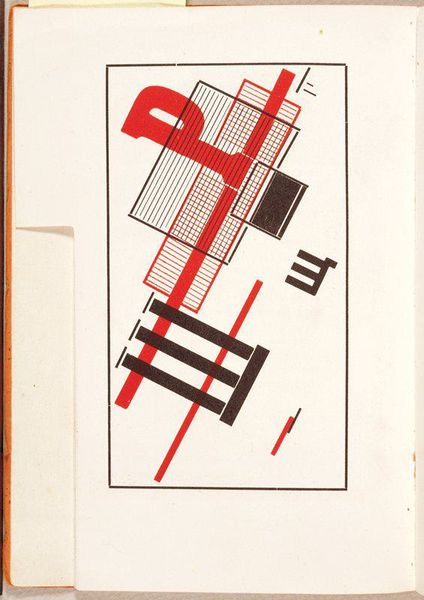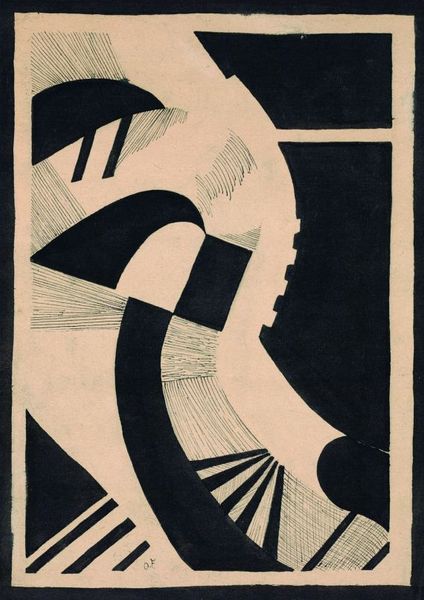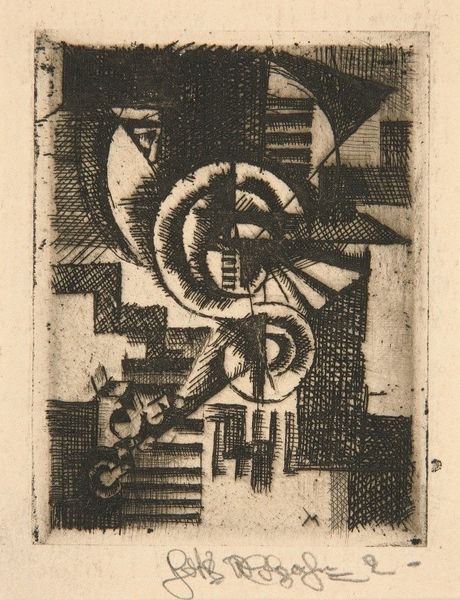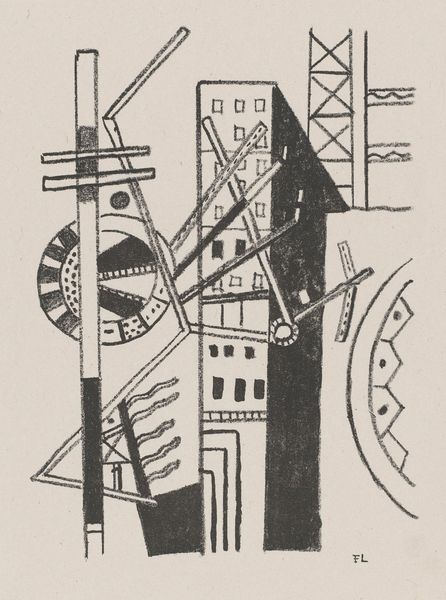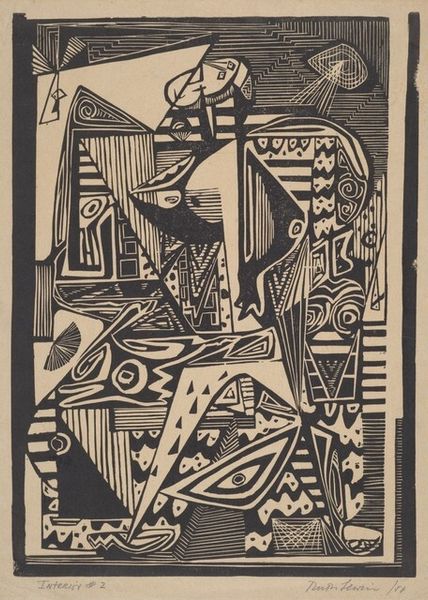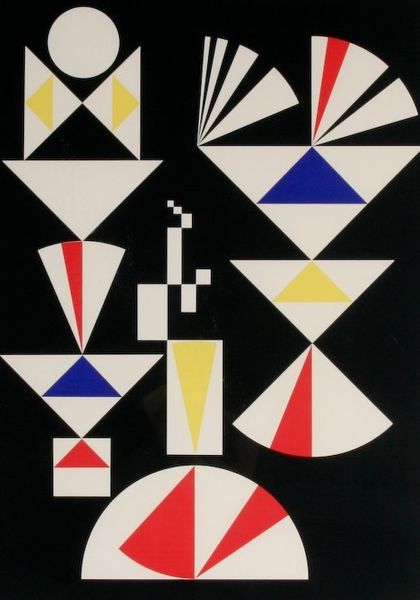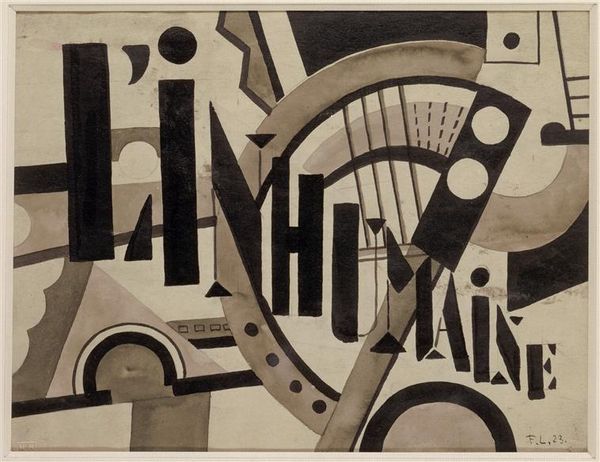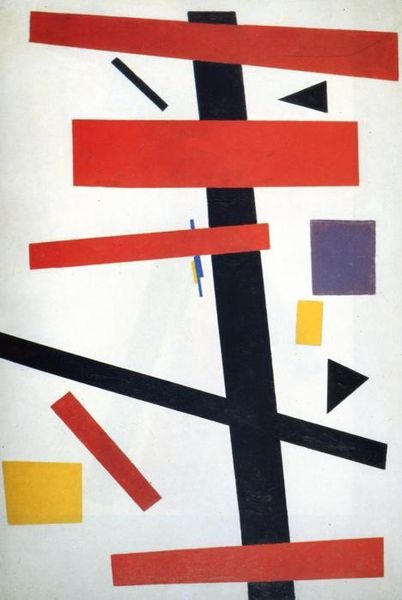
graphic-art, mixed-media, collage, print, paper, typography
#
graphic-art
#
cubism
#
mixed-media
#
collage
#
water colours
# print
#
constructivism
#
paper
#
typography
#
abstraction
#
mixed media
#
watercolor
Copyright: Public domain
Curator: Let’s turn our attention to László Moholy-Nagy’s “Hídak [Bridges],” a mixed-media collage created around 1921. The piece incorporates watercolor, printed elements, and typography on paper. What strikes you about it initially? Editor: The sheer dynamism, first and foremost. There's a sense of kinetic energy; diagonals crisscross the frame, and the bridge fragments seem poised for movement or even collapse. It's also visually fragmented, yet feels meticulously organized. Curator: That inherent tension you’re picking up on is key. Remember, Moholy-Nagy was deeply invested in Constructivism and its utopian ideals, which often wrestled with expressing the modern industrial world. The bridge, in this context, operates as a powerful metaphor. Editor: Right, infrastructure and connectivity, essential for social and industrial progress. But is it truly progress if the whole structure is visually precarious? I wonder about the red letterforms. "ES," "T," and "K" could function as radical slogans related to socialism at the time? It reminds me of how political movements often reclaimed established symbols or slogans and repurposed their meanings. Curator: Precisely. The inclusion of lettering invites linguistic associations that disrupt the purely visual. The work functions within and challenges societal shifts in a way that pushes art history’s boundaries of understanding art’s significance. Considering it comes on the heels of World War I and the collapse of empires, this deconstructed bridge reflects a fractured sense of hope and perhaps even disillusionment. Editor: I’m thinking of the relationship between abstraction and function as well. He shows us fragments of bridges; we know they exist and understand their purpose. Curator: Moholy-Nagy presents those fragments through the visual languages available to him – modernist abstraction, collage. "Bridges" represents his exploration of visual media. I find the tension inherent in that artistic inquiry truly gripping. Editor: And it still feels very relevant to discussions we’re having about infrastructure, connectivity, and societal divides today. Curator: Absolutely, it remains an incredible piece. Thanks for lending your thoughts to it. Editor: A pleasure; its fragmented vision is certainly thought-provoking.
Comments
No comments
Be the first to comment and join the conversation on the ultimate creative platform.
